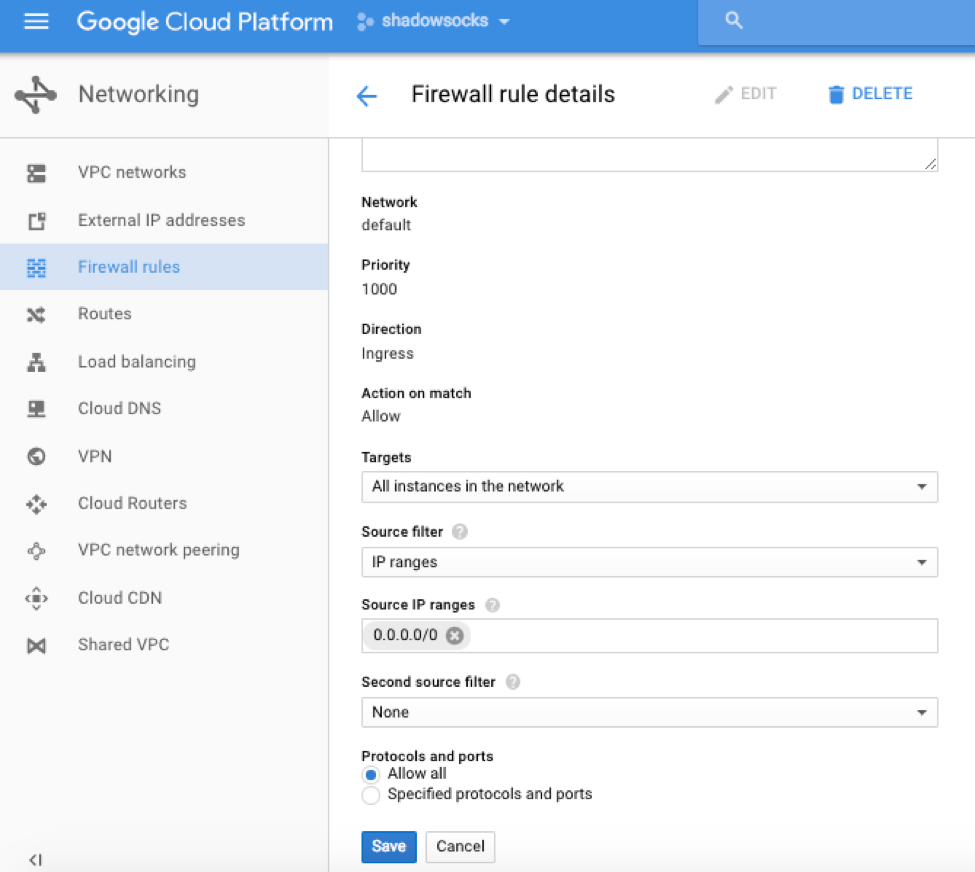

The port 8388 is kind of default port for Shadowsocks. You could also use a port number greater than 1000 to avoid using sudo, try 8443 or 8080 first. If possible, use HTTPs port 443, another option would be numbers like 995 (POP3s, if you don’t use POP mail server) or 990 (FTPs). The more common the port, the less likely it will be blocked. I show here the direct download, as it is the easiest and don’t require any change on the server machine.

Other option would be compiling by using Go get and written in the README.
#Google cloud shadowsocks download#
You can find prebuild binaries for direct download here: Besides, it offers the unique feature of running on multiple ports at the same time with different passwords, making it easier to share access with other people. I used the Go server program, as it doesn’t need any other prerequisites or libraries on the machine and can run standalone. Installation on clients (Android, iOS, OSX).This is why I’ve included some direct download URLs below. Fortunately, Github access as possible for me at this point. If you are already in the restricted area you might be unable to access the Shadowsocks website (and/or Google Play store).

#Google cloud shadowsocks software#
To forward the traffic into the Free Internet™ you need to run one of the server software on your machine. In comparison to commercial VPN/Proxy offers, you or someone you trust need command line access to a server outside the restricted area. It works similar like SOCKS5 but uses (better) encryption and (optional) session passphrases to avoid Known Plaintext Attack. Fortunately, this software is available again and was continued by the community. It was first conceived by Github user clowwindy, who had to take parts of the software down because he got visited by the local police. Shadowsocks is a Proxy/VPN protocol and collection of of compatible OpenSource client and server software programs.


 0 kommentar(er)
0 kommentar(er)
